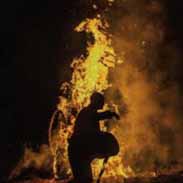Chapter 9 Practice Quiz 9.3 and 9.4 – Flashcards
Unlock all answers in this set
Unlock answersquestion
Oncogenes are all of the following EXCEPT: A. Mutated proto-oncogenes B. Cancer causing genes C. Genes that stimulate uncontrolled cell divisions E. Tumor suppressor genes
answer
E. Tumor suppressor genes
question
Cancer cells require many nutrients, which are supplied by blood vessels. The growth of new blood vessels to cancerous tissue is called: A. Angiogenesis B. Metastasis C. Carcinogenesis D. Apotosis
answer
A. Angiogenesis
question
Although cancer may originate in many regions of the body, many patients die from cancerous growth in the lungs, lymph glands, or liver. This is most readily explained as: A. Spreading of cancer by angiogenesis B. Metastasis occurring more commonly in organs that have a filter effect C. Proteinase enzymes making cancer particularly damaging to these tissues D. Growth anywhere but in these organs is called benign E. Die to these organs simply being more susceptible to cancer
answer
B. Metastasis occurring more commonly in organs that have a filter effect.
question
The region that contain the genetic information in a bacterial cell is called the: A. Nucleus B. Nucleoid C. Nucleolus D. Nucleosome E. Nucleoprotein
answer
B. Nucleoid
question
Which is Not correctly associated with cancer? A. Angiogenesis form new blood vessels and bring nutrients and oxygen to the tumor B. The disorganized mass of cells in encapsulated and does not invade adjacent tissue C. Metastasis establishes new tumors distant from the site of the primary tumor D. Cells have receptors to adhere to basement membranes, then secrete proteinase enzymes to invade underlying tissue
answer
B. The disorganized mass of cells is encapsulated and does not I add adjacent tissue
question
Which of the following is Not true about cancer cells? A. They never fully differentiate and do not contribute to the functioning of a tissue B. They exhibit contact inhibition C. They exhibit uncontrolled growth D. They exhibit disorganized growth E. They may undergo metastasis
answer
B. They exhibit contact inhibition
question
Binary fission in bacteria differs from mitosis because A. The chromosome copies attach to the attach to the plasma membrane and are pulled apart by cell growth B. The chromosome is simple DNA strand without complex proteins and no spindle forms C. There is no nuclear membrane to break down and rebuild D. All of the choices are correct E. None of the choices are correct
answer
D. All of the choices are correct
question
What structures will code for the proteins that will promote the normal cell cycle and prevent apoptosis? A. Tumor suppressor genes B. Oncogenes C. Caspases D. Proto- oncogenes
answer
D. Proto-oncogenes
question
The function of mitosis is: A. Growth of he organism and tissue repair B. To ensure that each new cell receives a complete set of genetic information C. Asexual reproduction in some species D. All of the choices are correct
answer
D. All of the choices are correct
question
Which statement is NOT true about eukaryotic chromosomes? A. There is only one chromosome of each type in each body cell B. Chromosomes contain both DNA and associated histones C. Chromosomes condense from chromatin at the start of mitosis D. Chromosomes disperse back into chromatin at the end of mitosis E. Chromosomes are not located within the nuclear envelope during mitosis
answer
A. There is only one chromosome of each type in each body cell
question
Angiogenesis: A. Is the growth of blood vessels into the tumor B. Is directed by additional mutations in tumor cells C. Brings nutrients and oxygen to a tumor D. All of the above E. None of the above
answer
D. All of the above
question
The purpose of therapeutic cloning is: A. To produce an individual to the donor of the nucleus B. To produce specialized tissue cells C. To stimulate cells that have been arrested in the S phase S. None of the above
answer
B. To produce specialized tissue cells
question
Generally, animals build an organism using the diploid number of chromosomes. However, insect in the order of ants, wasps and bees can use a haploid-diploid system where adults of one sex are formed with haploid number of chromosomes. This would mean that, A. A single set of chromosomes is sufficient to code for a functional individual B. A female could determine the sex of the offspring by fertilizing or not fertilizing an egg C. All males and females are not equally "related" to their mothers considering the proportion of genes held in common D. All of the choices are true E. This system in no way differs from regular diploid organisms
answer
D. All of the choices are true.



